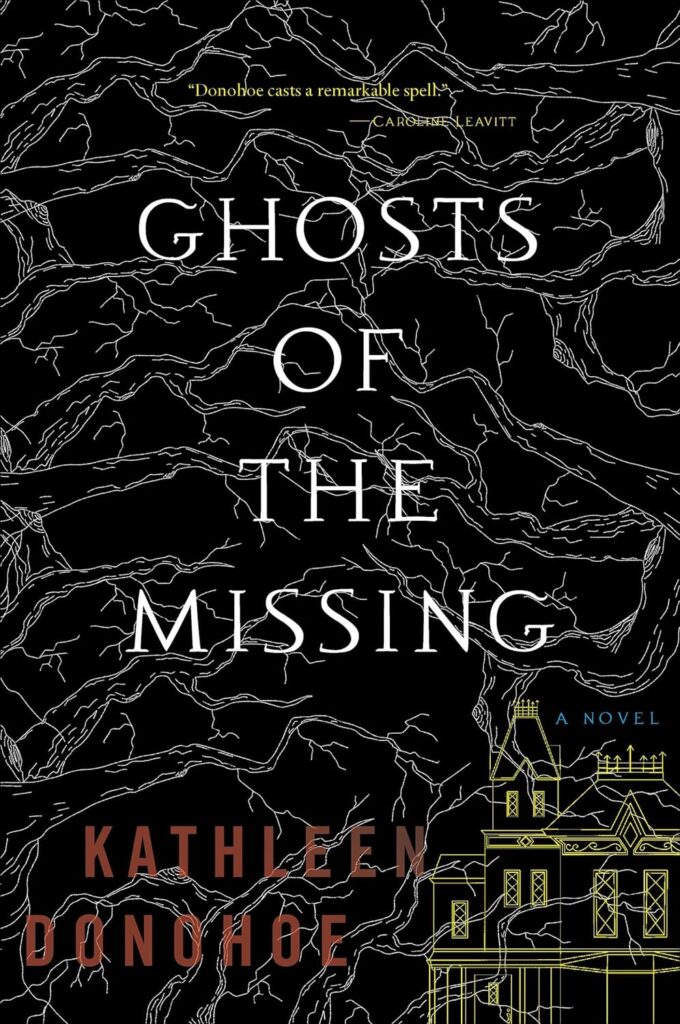With St. Patrick’s Day coming up, I thought it would be interesting to look at an Irish tale involving hemophilia. From our archivist and researcher from North Carolina, Richard Atwood: “Ghosts of the Missing (2020) is a cold case missing person mystery that accurately portrays hemophilia, then weaves it into the multigenerational story of missing girls and their ghosts. The author, Kathleen Donohoe, who serves on the board of Irish Americans Writers & Artists, lives in Brooklyn, New York.” From Amazon: In the vein of The Lovely Bones and The Little Friend, Ghosts of the Missing follows the mysterious disappearance of a twelve-year-old girl during a town parade and the reverberations of this tragedy throughout the town.

William Moye builds his foundry in the Hudson River Valley in what will become Culleton, New York. Irish-Catholic immigrants work in the foundry, which specializes in creating bells. The workers live in the shantytown called Cullytown. Helen Dunleavy, age 16 with green eyes, arrives in 1856 to work in the Moye household. She comes from Ballyineen (or Daughtertown) in Galway, Ireland. Dunleavy women are healers: they have the ability to cure. The women are also cursed: girls live, while the boys die in infancy. Helen brings to America the cure and the curse, or broken gene (later identified as factor VIII deficiency or hemophilia A). Her son dies, while her twin daughters, named Clara and Lucy, live. Clara does not have the gene. Lucy has it and passes it on.
Cassius Moye, the son of William, is born in 1843. He is captured during the Civil War, and develops tuberculosis. When he returns home, he writes The Lost Girl and Other Stories. His cousin Augustus runs the foundry. At his death in 1884, Cassius passes the Moye House to his publisher, who eventually sells it to Marjorie Moye Pearse, a descendant of Augustus, in 1946. The Moye House Writers’ Colony is established in 1953 to be located in the house where Cassius Moye was born. Culleton holds a Lost Girl celebration every October 27. Cecilia Burke, a descendant of Lucy Dunleavy, marries Daragh McCrohan and has two sons, Michan and Cathal. Both sons have hemophilia. Their factor VIII is a miracle treatment: it saved them before it killed them. “Factor VIII was a blood product manufactured as a powdered concentrate that caused blood to clot.” (p. 79). Michan, born in 1967, is spared HIV due to immunity or resistance, but acquires Hepatitis C. He becomes a poet and a professor at Gilbride College.

As a bachelor, Michan takes up residence in Moye House and publishes Lost Girls: An Anthology of Stories Written at Moye House Writers’ Colony. Cathal and his wife Lissa acquire HIV and die of AIDS, while their daughter Adair develops AIDS. Michan brings the orphan Adair, then 11, to Moye House in 1994. Rowan Kinnane is a fifth cousin of Adair McCrohan (Helen Dunleavy is four times great grandmother to both girls). Rowan, a descendant of Clara Dunleavy, befriends Adair, who is shunned at school for having AIDS. On October 28, 1995, Rowan, aged 12, disappears under suspicious circumstances. The police never solve her case.
Adair starts HAART treatment, an antiviral cocktail, in 1996. Adair experiences visions of Rowan. In 2010 while living in Brooklyn, she stops taking her medicines to be hospitalized with pneumonia. She returns to Moye House under the care of Michan, once again. Ciaran Riordan, a stepbrother of Rowan living in Ballyineen, Ireland, enrolls in the Moye House Writers’ Colony to research missing children, including Rowan. Both Adair and Ciaran investigate the disappearance of Rowan by eliminating suspects and finding clues associated with the rowan tree, or quicken tree, located next to the Rosary Chapel and a book of magic called A Charm for Lasting Love: Spells and Cures from Ireland, that includes a cure for the chronically ill.
Adair McCrohan explains hemophilia: “Culleton had known for a century that my family was cursed. Boys die. Girls live. At least this was how they put it before the disease was called by its proper name: hemophilia. From the Greek: haima = blood + philia = to love. Though ‘to love’ in this context is interpreted as “tendency to.” The blood doesn’t clot properly. Tendency to bleed. Women are carriers. Their sons get the disease but their daughters don’t.”

